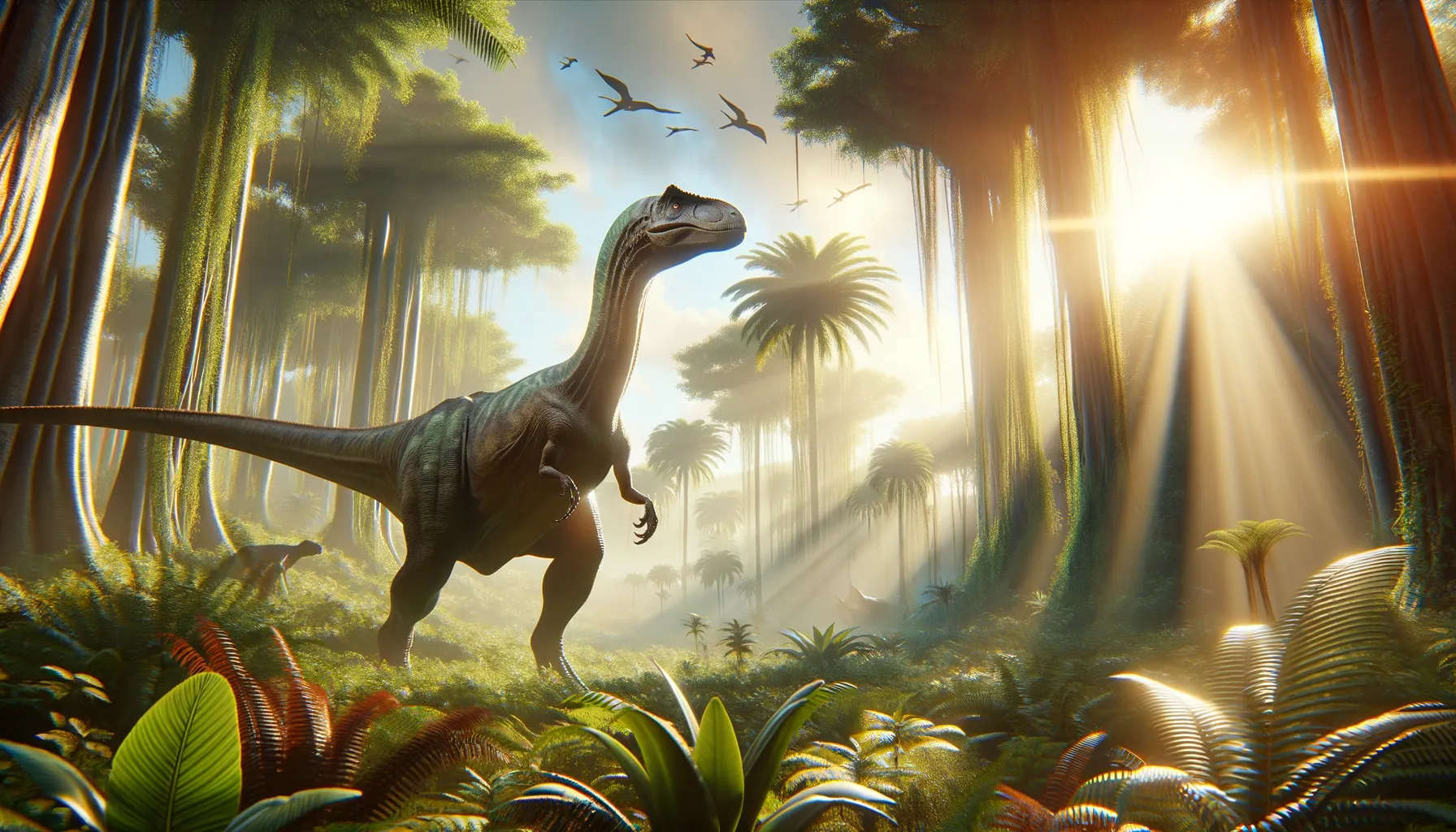
Thecocoelurus
Elusive predator of the Cretaceous hunt.
Period
Cretaceous
Length
Around 3 meters long.
Height
Approximately 1.8 meters tall.
Weight
Roughly 50 to 70 kilograms.
Thecocoelurus was a theropod dinosaur living in the Early Cretaceous period. It was a small to medium-sized bipedal carnivore known for its agile build. Despite limited fossil evidence, it is believed to have an elongated neck and lightweight, hollow bones. The lack of complete specimens leaves many aspects of its life and appearance to interpretation.
Diet
Thecocoelurus was likely carnivorous, hunting smaller animals or scavenging remains of other creatures. Its lightweight build suggests it may have relied on speed to catch its prey.
Hunting
As a probable opportunistic hunter, Thecocoelurus may have employed quick dashes to catch unsuspecting prey. It likely had keen senses to adapt to varying prey availability.
Environmental challenges
During the Cretaceous period, Thecocoelurus faced environmental changes such as fluctuating climates and evolving ecosystems. It needed to adapt to periods of food scarcity due to competition with other carnivores. Additionally, natural tectonic shifts may have altered its habitable terrain, compelling migration.
Speed
Likely moderate, suitable for short bursts.
Lifespan
Estimated to be around 20 to 30 years.
First discovery
Discovered in 1888 by Richard Lydekker.
Fun Facts
- Thecocoelurus was a dinosaur that lived during the Early Cretaceous period, around 130 million years ago.
- It was first discovered in England, making it one of the UK's unique dinosaur finds.
- Thecocoelurus was likely a theropod, meaning it was a bipedal carnivore, although not much is known about its diet.
- The name 'Thecocoelurus' means 'sheath hollow tail', which refers to the hollow structures found in its vertebrae.
- Only a few bones of Thecocoelurus have been found, making it a bit of a mystery in the dinosaur world.
- Despite the limited fossil evidence, Thecocoelurus helps fill in the gaps about the diversity of early Cretaceous theropods.
Growth and Development
Thecocoelurus hatched from eggs, growing steadily in nearby nests. Juveniles were likely vulnerable, requiring rapid development to survive. As they matured, they developed physical traits enabling their predatory lifestyle and defensive mechanisms.
Habitat
Thecocoelurus roamed the rich, forested areas of what is now England. This environment provided ample cover and diverse prey. It likely favored regions with access to water sources and varied terrain for living and hunting.
Interaction with other species
Thecocoelurus coexisted with various herbivorous dinosaurs, competing with other small predators for food. Its interactions included avoiding or confronting larger predators. Over time, its ecological role led to predator-prey dynamics that influenced its evolution.
Natural lifespan
Thecocoelurus had an estimated natural lifespan of 20 to 30 years.
Reproduction
Thecocoelurus reproduced through laying eggs, consistent with theropod dinosaurs. Clutch sizes and parental care levels remain speculative but necessary for species continuity.
Social behaviour
It's unclear if Thecocoelurus was social or solitary, but cooperative hunting or isolated stalking are possibilities. Communication likely involved visual cues and body postures.
Fossil locations
Fossil evidence of Thecocoelurus has primarily been found in the Wealden Group of southern England. Recovered remains have been sparse, leading to limited comprehensive data. The discovery aids in understanding the diversity of Early Cretaceous ecosystems.
